
It is great to see some the big car manufacturers finally starting to see the light and begin to produce cars that are much more environmentally friendly then they have been building over the past few years. And I am sure if you have been following our blog then you may have noticed that we have become a bit of a fan with the Nissan electric car known as the LEAF (apparently LEAF is short for Leading Environmentally-friendly Affordable Family car). So, today I thought we would compare the popular American built Chevy Volt with the Nissan LEAF to see how they match up against one another.
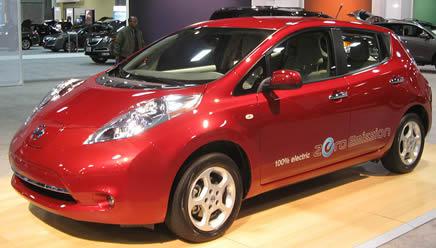
The Nissan LEAF is a fully 100% electric automobile (No Gas Required!) that does not generate any tailpipe pollution or greenhouse gas emissions (not including the battery charging), and significantly helps to reduce human dependence on the use of petroleum. The LEAF’s shape is characterized with a sharp V like design housing large upwards slanting LED (light-emitting diode) headlights that create a distinctive bluish internal reflective design. The headlights also help to split and redirect the airflow away from the side mirrors, helping to reduce wind resistance. The mainstream look is meant to appeal to most drivers by providing the car with a traditional sedan look.The under body of the car also contains aerodynamic paneling to help reduce wind drag as well. It has won the 2011 World Car of the Year, the 2010 Green Car Vision Award award, the 2011 European Car of the Year award, and also ranks as the most efficient EPA certified vehicle for all fuels ever.
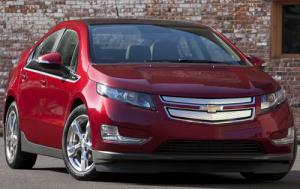
The Chevrolet Volt is a hybrid electric automobile and is the most fuel efficient compact car available in the USA. General Motors describes the car as an electric based vehicle equipped with a “range extending” gasoline powered internal combustion engine and often refers to the Volt as an “Extended Range Electric Vehicle”. Almost every component of sleek sedan styled Volt has been designed to get the most out of it such as the closed front grille coupled with the aerodynamic back ridges that provide aerodynamics that contribute to its superb fuel efficiency and helping maximize the distance per charge and get more miles to the gallon. The Volt has won the 2011 Motor Trend Car of the Year award, 2011 North American Car of the Year, 2011 Motor Trend Car of the Year, 2009 Green Car Vision Award, 2011 Green Car of the Year as well as many other notable awards from various organizations:
Both cars are compact class electric vehicles in full production and available from almost any dealership near you. From a dimensional standpoint, the exterior dimensions of each vehicle are very similar in length, width, height, and wheelbase (See Table 1 at the end of the article that provides a detailed comparison between the two vehicles). From an interior dimensional standpoint, the LEAF has slightly more front and rear interior headroom than the Volt does, but slightly less front and rear shoulder / hip room. Front and rear leg room between the two vehicles is closely similar. A major dimensional difference is the cargo carrying capacity, which is 14.5 cubic feet for the LEAF, compared to the Volt’s 10.6 cubic feet.
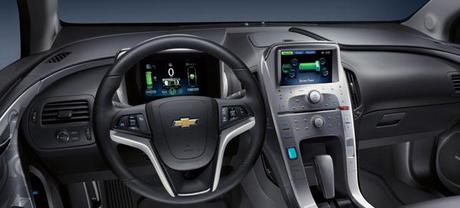
The two vehicles approach power differently. Both are primarily electric based automobiles; however the Chevy Volt is more of a true hybrid vehicle, with a small 1 litre, 3 cylinder gasoline engine that becomes operable once the Volt’s battery has been depleted and the vehicle begins operating in the Extended Range Mode. The LEAF is strictly an electric vehicle with no gasoline engine at all, therefore it has a 50% larger battery than the Volt (24 kWh, versus the Volt’s 16 kWh). The maximum mechanical power of the Volt is approximately 161 hp, compared to the LEAF’s 107 hp. This gives the Volt a greater top speed than the LEAF; 100 mph, compared to 90 mph. Both vehicles can be recharged using ordinary 110V current, or via 240V charging stations. One thing we noticed was that the 240V charging station is standard equipment included with the LEAF but must be purchased separately for the Volt, and with installation may cost about $1,495 extra over the vehicle purchase price. Because the LEAF has a larger battery than the Volt, it takes longer to fully charge the LEAF.
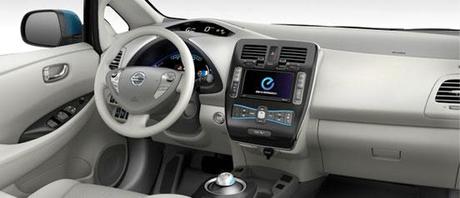
For stability, both vehicles have independent front suspension with stabilizer bar. The Volt has semi independent rear torsion beam suspension, while the LEAF has a torsion bar rear axle with integrated stabilizer bar. Both vehicles have dual-stage front and side-impact air bags as a part of their protection systems. The LEAF touts its Zone body-construction with front and rear crumple-zones. Both vehicles offer an array of standard goodies, such as audio / DVD / CD / MP3 players, cruise control, power side mirrors, anti-lock brakes, tire pressure monitoring systems.
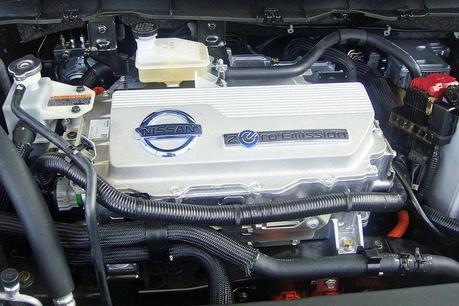
According to a March 11, 2011 review of both vehicles found at www.theexpiredmeter.com, the volt had outsold the LEAF in the U.S., 928 to 173 at the time of publication. Internationally, about 3,600 additional LEAFs have been sold worldwide (the Volt is not sold outside the U.S.). The article states that both Consumer Reports and USA Today have said that the stated mileage for both vehicles is less than what the manufacturers claim. Supposedly, the Volt realistically gets only 23-28 miles per battery charge (instead of the 40 indicated in the owner’s manual), while the LEAF only gets 65 miles per charge (as opposed to 100 stated in manufacturer’s literature).
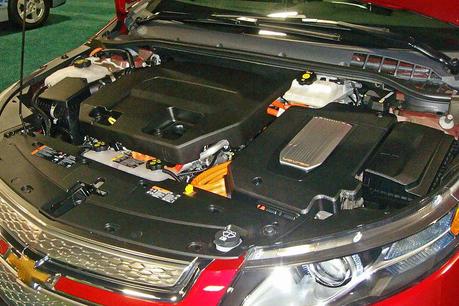
The Chevy Volt has a neat mobile app that you can use anywhere with your smart phone. The OnStar RemoteLink mobile smart phone app allows users, to check the battery charge, remaining range, as well as other features such as tire pressure and even start it up with a remote car start. It even allows the user to set up alerts via text or email to remind them to plug in their car and when charging is complete.
The first vehicles sold in the US were released earlier this spring that saw a slight delay in delivery due to the earthquake in Japan. Commercial US production is expected to begin in late 2012 at Nissan’s manufacturing plant in Tennessee. The LEAF has been selling here in Canada for the past three weeks with an extensive pre-order process taken on a first-come, first-served basis. The province will provide a $8,500 tax credit for qualified buyers and the province of Quebec offers tax rebates of up to $8,000.
The Volt has been for sale throughout the US already and will be available to purchase in Canada later this fall. The Volt is being endorsed by the Ontario government and the province will provide a $8,500 tax credit for qualified buyers.The province is also planning on purchasing up to 500 Chevy Volts to add to their provincial government fleet of vehicles. The Quebec government is also planning on offer rebates of up to $8,500 starting in 2012.
Although these two compact cars are almost identical in style and size they are still not easy to compare exactly mainly due to the fact that the Volt still contains a gasoline engine, none the less they are similar enough and both vehicles have potential to help reduce an already increasing carbon foot print from our society. Definitely steps in the right direction, finally the days are here where driving electric powered vehicles are not just for those in fancy science projects or the Jetsons.
Thumbs up to both General Motors and Nissan and we hope to watch them roll out more out these fuel-efficient vehicles in the coming years. Hopefully we will be able to find a few of these cars in the next year or so, for a follow up story.
Price Comparison
Vehicle Price $41,000 – qualifies for federal $7,500 Electric Vehicle Tax Credit 32,780 – qualifies for federal $7,500 Electric Vehicle Tax Credit (California also offers a $5,000 tax credit)
Vehicle Class / Construction / Dimensions / Weight / Capacity
EPA vehicle class Compact car (four doors with rear lift-gate) Compact car (four doors)
Construction Made up of a body-frame integral structure with composite exterior panels and roof Zone body construction with front and rear crumple zones
Exterior Dimensions
Length / Width / Height 177.1 inch / 70.4 inch / 56.3 inch 175.0 inch / 69.7 inch / 61.0 inch
Wheel base 105.7 inch 106.3 inch
Interior Dimensions
Front/Rear Headroom 37.8 inch / 36.0 inch 41.2 inch / 37.3 inch
Front/Rear Shoulder Room 56.5 inch / 53.9 inch 54.4 inch / 52.5 inch
Front/Rear Hip Room 57.3 inch / 51.2 inch 51.5 inch / 50.0 inch
Front/Rear Legroom 42.0 inch / 31.0 inch 42.1 inch / 31.1 inch
Cargo Volume 10.6 cubic feet 14.5 cubic feet
Curb weight 3781 pounds 3354 pounds
Seating 4 to 5 passengers 5 passengers
Other Features
Power Description Electrically driven system with an on-board range extender, plug-in recharge capability Electrically driven system with an on-board range extender, plug-in recharge capability
Battery Type 16 kWh lithium-ion 24 kWh lithium ion
Recharge @ 110-volt outlet 6 to 6.5 hours 20 hours
Recharge @ 240-volt outlet 4 hours (240-volt charging dock sold separately, GM estimates cost of purchase and installation to be $1,495) 7 hours (240-volt charging dock included as standard feature)
Max. mechanical power 120 kW (161 hp) 80 kW (107 hp)
Battery Warranty 8-years/100,000 miles 8-years/100,000 miles
Gasoline Engine Type: 1 L 3-cylinder, turbocharged engine N/A
Fuel Type gas or E85 N/A
Fuel Tank Size 12 gallon N/A
Vehicle Range 40 miles – full electric vehicle range; up to 300 additional miles in extended range mode using gasoline engine 100 miles – electric mode only available
Vehicle Top Speed 100 mph 90 mph
Systems
Brakes 4-wheel antilock, 4-wheel disc, electro-hydraulic power with StabiliTrak with brake assist, regenerative system 4-wheel power-assisted vented braking system, regenerative system, 4-wheel antilock, electronic brake force distribution (EBD), brake assist, electronic parking brake
Tire Pressure Monitor Standard Standard
Power Adjustable Mirrors Heated, body-color, with integrated turn signal indicators Power adjustable mirrors standard
Wheel size 17-inch (forged painted aluminum wheels standard) 16-inch (aluminum alloy wheels standard)
Audio System Audio / DVD / MP3 playback, 30 GB onboard audio storage, 6 Bose speakers, USB port for audio devices, XM radio / Nav. Traffic with 3 month trial subscription AM/FM / CD / MP3 audio system, USB port for audio device connection, XM radio, 6 speakers, steering wheel mounted audio controls
Bluetooth Bluetooth capable for hands-free phone use Bluetooth hands-free phone system
Cruise Control Cruise control with steering-wheel mounted controls Cruise control with steering-wheel mounted controls
LCD Display 7inch diagonal LCD touch screen Nissan Navigation System with 7inch color display
Air Bags 8 total dual stage frontal, side-impact and knee for driver and front passenger and roof rail side impact for front and rear outboard seating positions, includes Passenger Sensing System Nissan Advanced Air Bag System with dual-stage supplemental front air bags with seat belt and occupant-classification sensors. Has Driver and front-passenger mounted side-impact airbags and roof mounted curtain side impact airbags for front and rear
Stability Control Independent front strut suspension with stabilizer bar and coil springs, semi independent rear torsion beam suspension with coil springs. StabiliTrak stability control Independent front suspension with stabilizer bar, torsion bar rear axle with integrated stabilizer bar
[References::
- General Motors, Inc. 2011 Chevrolet Volt Brochure
- General Motors, Inc. 2011 Chevrolet Volt Owner Manual. [chevrolet.com]
- Nissan, Inc. 2011 LEAF Brochure
- Nissan, Inc. 2011 LEAF Owner’s Manual [nissan.ca]
- The Expired Meter. (March 11, 2011). Chevy Volt, Nissan LEAF Face Poor Sales, Reviews
Retrieved from: http://theexpiredmeter.com/2011/03/chevy-volt-nissan-leaf-facepoor-reviews-low-sales/
- Wikipedia.org ]
[Image Sources: Wikipedia.org - chevrolet.com & nissan.ca]

